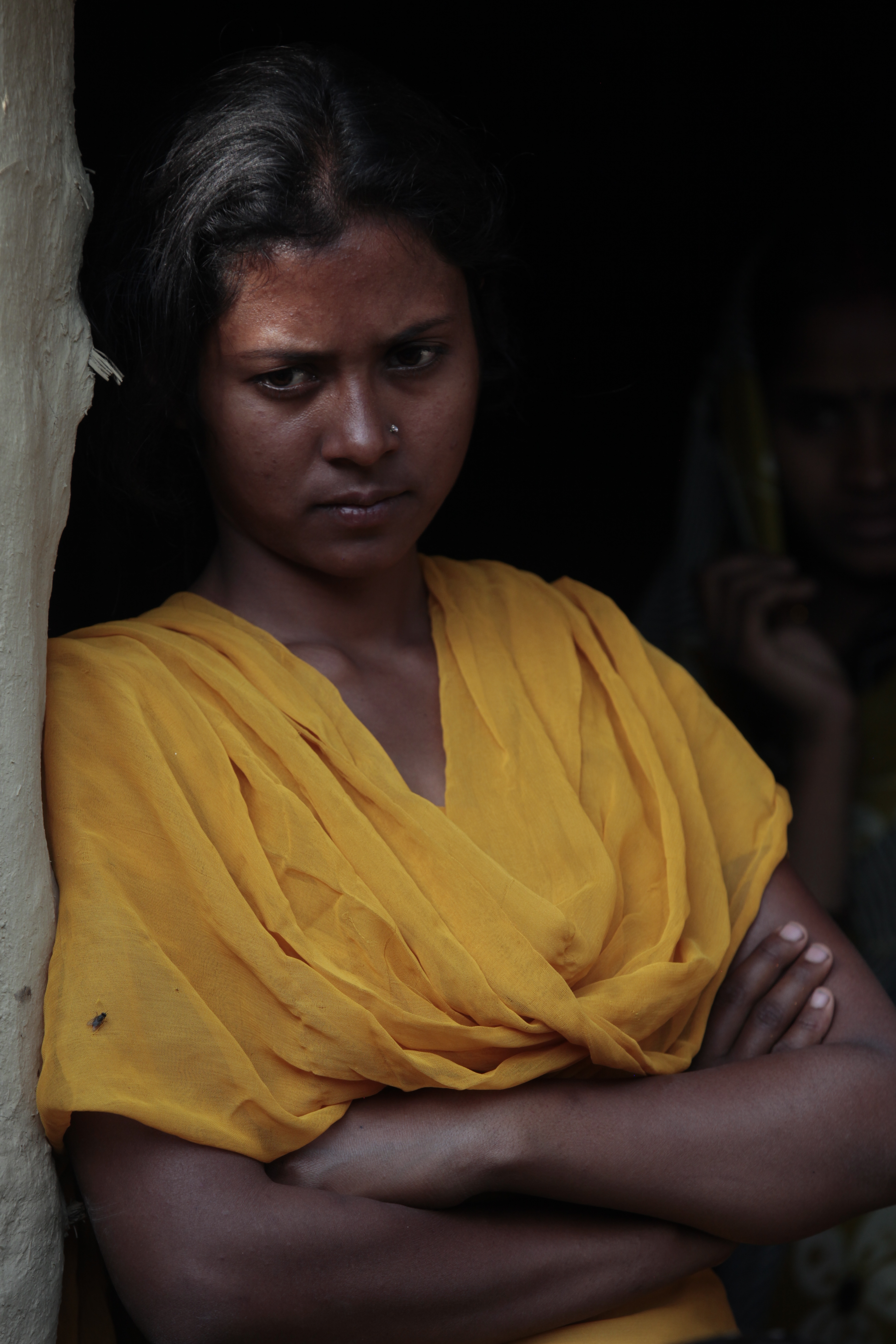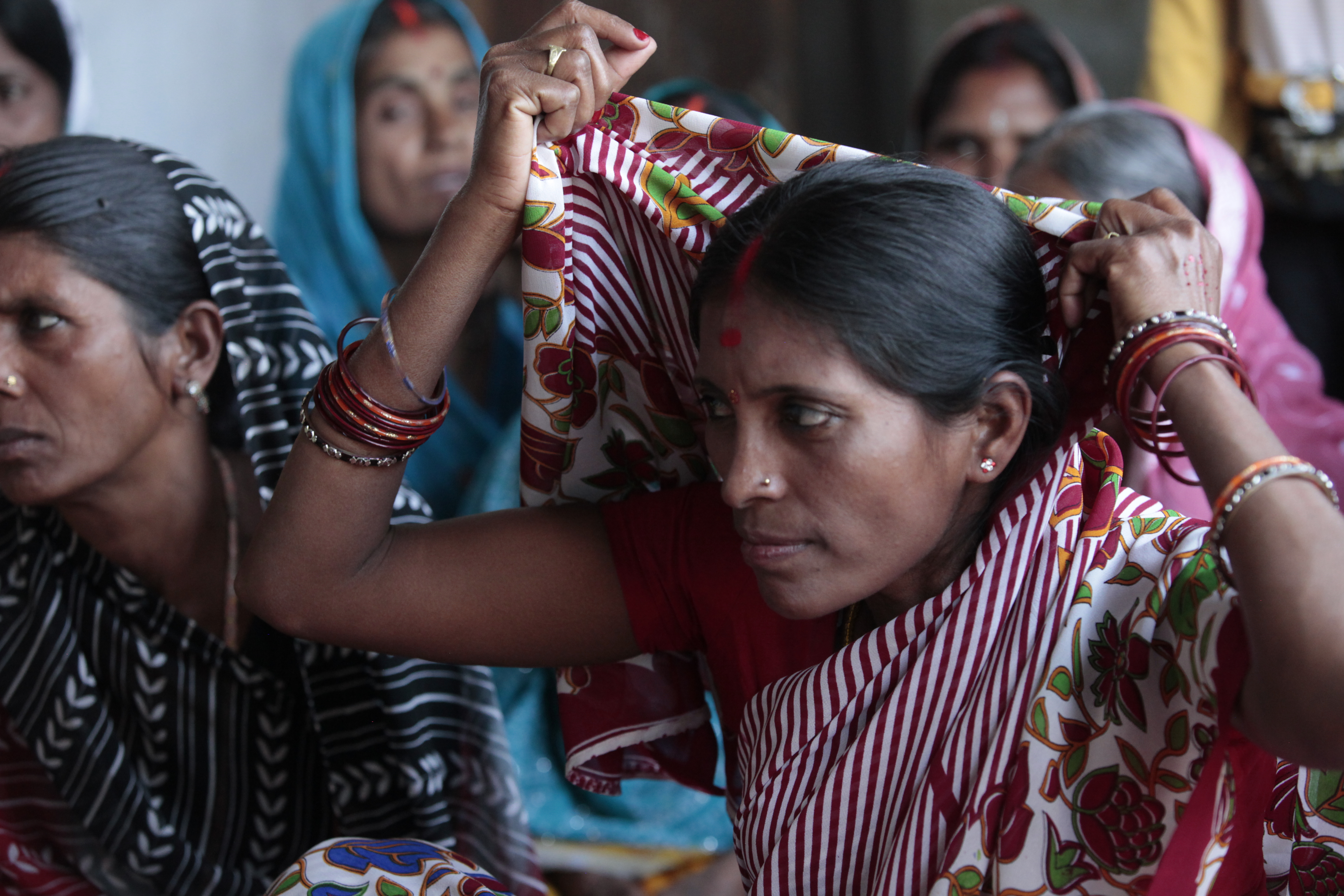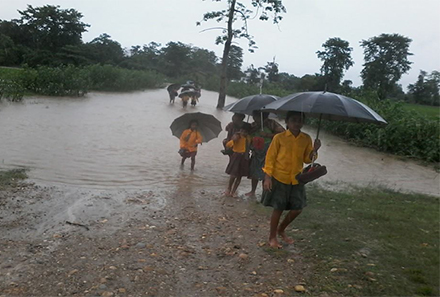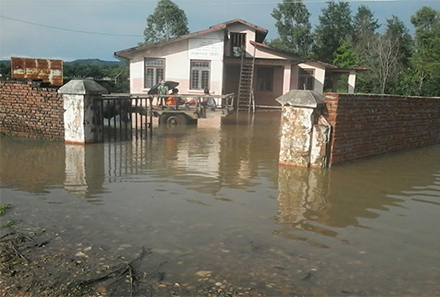
UPDATE: 5:00 p.m. Tuesday, August 9–We must regretfully report that one of our project participants in India has died as a result of severe flooding following monsoon rains, according to Heifer India staff.
These floods have affected millions in India, Nepal and Bangladesh, including thousands of Heifer project participants in all three countries.
In the Bihar region of India, home to Heifer project work and the region of the country most affected by flooding, 641 Heifer families’ homes have been submerged or damaged, almost 600 acres of agricultural land has been damaged and 2,518 livestock have been killed.
Thankfully, the water levels in the affected villages have begun to recede and many Heifer project participants are returning to their homes. We will continue updates on the recovery efforts here.
----
UPDATE: 5 p.m. Thursday, August 4–Flooding and landslides caused by monsoon rains continue to affect Heifer projects in Nepal, India and Bangladesh. While damage to roads and other infrastructure has made gaining access to the affected communities a challenge, Heifer staff in all three regions are working hard to reach Heifer communities, assess the damage and coordinate with project participants and other organizations to begin recovery efforts.
In the Purnea district in India, 146 Heifer project participants are injured and 2,607 goats and cattle have died, while 6,500 Heifer families’ homes have been submerged or damaged and 1,839 hectares of farmland has been damaged. In the Dharbhanga district, there is no loss of human life or livestock, but transportation and other community infrastructure is not functional. There is a high risk of a major disease outbreak. In this district, 3,915 Heifer project families have been affected by river flooding. The severe flooding of farmland means that many of these families have lost their livelihoods; there are few opportunities for other forms of employment.
In Bangladesh, the rains and subsequent flooding have affected about 2,342 Heifer project households in the Belkuchi, Sirajgong area. The Heifer Bangladesh team reported Wednesday that families have seen damage to their homes, animal sheds, some improved latrines and vegetable and crop fields. More than 30 goats have died in the flooding, while more than 3,000 poultry have perished in the floods.
In the districts of Banke, Dang and Pokhara, Nepal, 2,141 families’ homes have been submerged or otherwise damaged in Heifer communities. For these families, much of their agricultural lands and crops have been washed away. Stored food and other belongings have also been destroyed by the water. Flood water levels have not yet subsided, and people can be found cooking food on the roads or gathered in high places like schools and terraces.
All Heifer teams are continuing to gauge the damage in the affected areas, and will continue to update us with news and recovery efforts. We will report new developments here.
----
UPDATE: 10 a.m. Wednesday, August 3–The monsoon rains that have caused flooding in India and flooding and landslides in Nepal have now begun to affect neighboring Bangladesh, including nearly 2,400 Heifer project families in the Central region.
The rains and subsequent flooding have affected about 2,342 Heifer project households in the Belkuchi, Sirajgong area. The Heifer Bangladesh team reported Wednesday that families have seen damage to their homes, animal sheds, some improved latrines and vegetable and crop fields. More than 30 goats have died in the flooding, while more than 3,000 poultry have perished in the floods.

In the Purnea district in India, nearly 1,900 goats and cattle have died, while 6,500 Heifer families’ homes have been submerged or damaged and 1,839 hectares of farmland has been damaged. In the Dharbhanga district, there is no loss of human life or livestock, but transportation and other community infrastructure is not functional. There is a high risk of a major disease outbreak. In this district, 3,915 Heifer project families have been affected by river flooding.
Heifer India field staff are hard at work assessing damage and working with partners and Heifer project participants to organize relief efforts.
In the districts of Banke, Dang and Pokhara, Nepal, 2,141 families’ homes have been submerged or otherwise damaged in Heifer communities. For these families, much of their agricultural lands and crops have been washed away. Stored food and other belongings have also been destroyed by the water. Flood water levels have not yet subsided, and people can be found cooking food on the roads or gathered in high places like schools and terraces.
All Heifer teams are continuing to gauge the damage in the affected areas, and will continue to update us with news and recovery efforts. We will report new developments here.
-----
UPDATE: 3 p.m., Tuesday, August 2–The severe flooding affecting Nepal has spread to Heifer projects in eastern India as well, Heifer's Asia staff reported Tuesday.
Hundreds of thousands in the Bihar region of India have been affected by flooding caused by the same monsoon rains that have inundated Nepal. As of July 28, at least 1,500 villages have been flooded in eight districts of Bihar and 17 people have lost their lives.
Heifer has projects in five districts in Bihar, two of which have been heavily affected by the floodwaters. Our projects in this region aim to move 24,000 families out of poverty through sustainable agriculture.

So far we know that in the Purnea district, the flood has claimed three human lives. Nearly 1,900 goats and cattle have died, while 6,500 Heifer families’ homes have been submerged or damaged and 1,839 hectares of farmland has been damaged.
In the Dharbhanga district, there is no loss of human life or livestock, but transportation and other community infrastructure is not functional. There is a high risk of a major disease outbreak. In this district, 3,915 Heifer project families have been affected by river flooding.
Heifer India field staff are hard at work assessing damage and working with partners and Heifer project participants to organize relief efforts.
Heifer Nepal is continuing to assess damage to project sites in eight of the affected districts in Midwestern Nepal. In the districts of Banke, Dang and Pokhara, nearly 2,200 families’ homes have been submerged or otherwise damaged in Heifer communities.
We will continue to update here with project assessment and recovery efforts.
-----

UPDATE: 4:00 p.m., THURSDAY, JULY 28–Heifer Nepal is continuing to assess damage to project sites in Midwestern Nepal after heavy rainfall triggered mudslides and flooding there. Thousands are displaced and hundreds have been killed in the 14 districts hit by the floods.
Heifer currently works in eight of the affected districts. Two family members of a Heifer project participant have drowned in a flooded river. In the districts of Banke, Dang and Pokhara, 2,141 families’ homes have been submerged or otherwise damaged in Heifer communities. For these families, much of their agricultural lands and crops have been washed away. Stored food and other belongings have also been destroyed by the water. Flood water levels have not yet subsided, and people can be found cooking food on the roads or gathered in high places like schools and terraces.

Farmers are especially distressed to see their rice paddy fields washed away. It is likely that this disaster will lead to food shortages this year.
An army helicopter was able to rescue 500 people and transfer them to safe locations, but no other rescue or relief material has reached survivors yet.
The flood has damaged roads and other infrastructure, which has made reaching these villages a huge challenge, but Heifer Nepal staff are working to gather more information on the damage and status of survivors. We will continue to post updates here as more reports come in.
–––--
Heifer Nepal is assessing damage to project sites in Midwestern Nepal after heavy rainfall triggered mudslides and flooding there. The flooding comes just a little more than a year after the country experienced its largest earthquake in 80 years.

"Water levels started to increase in the Rapti river since Tuesday morning and entered villages in Banke and Dang districts, displacing 900 families,” said Sumnima Shrestha, Heifer Nepal’s communication and resource mobilization manager. It appeared as though our projects were seriously affected, the report from staff said.
While the floods have damaged roads and other infrastructure, the effect on livestock is not yet known. Heifer Nepal is gathering more information on the status of families and their animals.
Heifer currently works in eight districts affected by the flooding and landslides. People there have gathered in the highlands and at schools to escape the rising waters. Fattepur, one area where we work, experienced severe flooding just a few years ago.
Nepal’s Home Ministry reported that the flooding and landslides killed at least 54 people and at least 20 more are missing. At least 14 of the country’s 75 districts have been affected by the floods.
A report from Heifer Nepal said that soldiers and volunteers were using rubber boats to rescue people, and that they were using helicopters to drop food supplies.